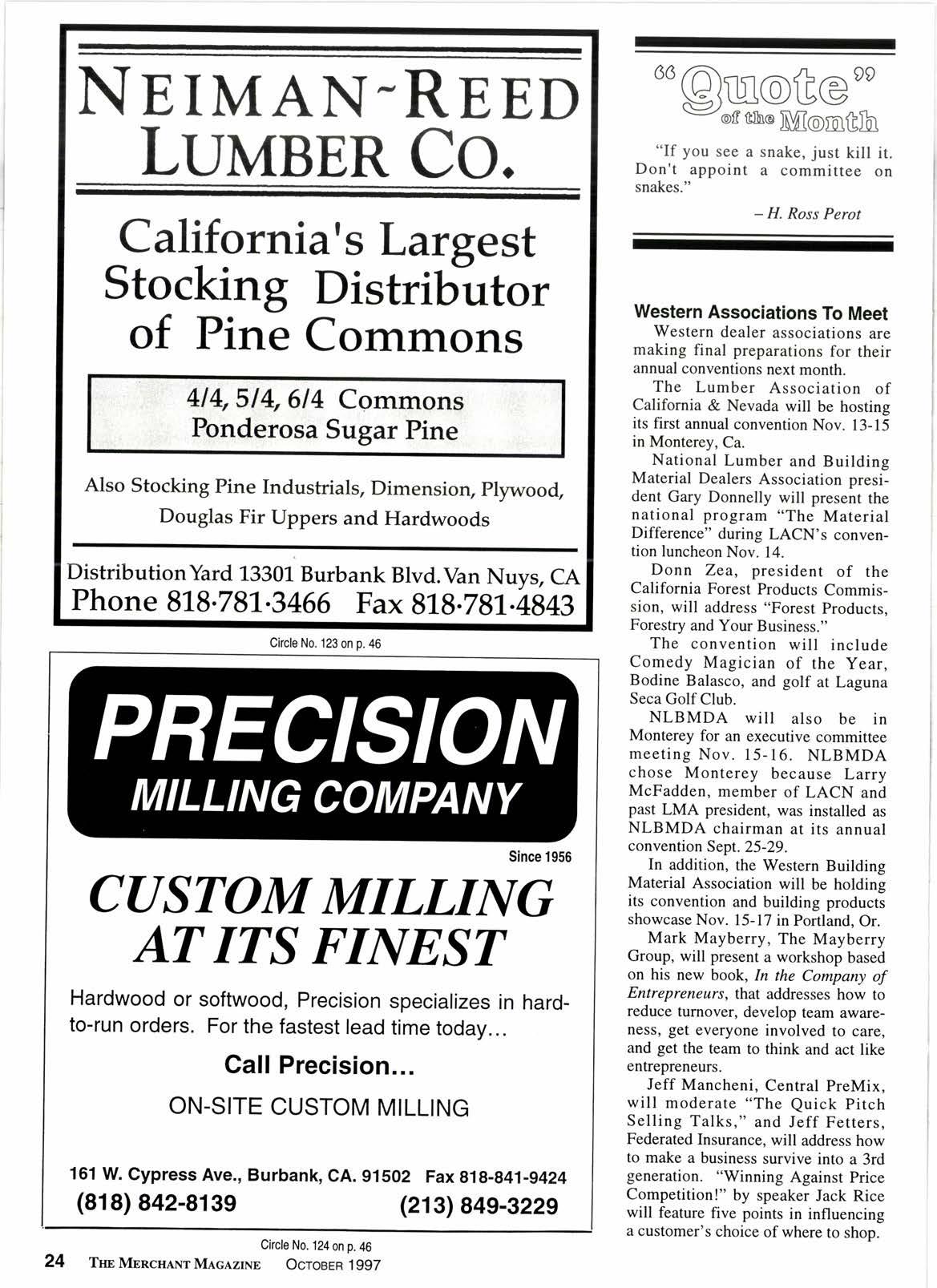
3 minute read
Six st I inventory ,ffiqffi
fNACCURATE inventory counts is Ithe greatest problem in inventory management.
The vast majority of companies are nowhere near the minimum acceptable 95Vo level. While 957o accvacy is far better than the average company performance, 97-98Vo accuracy is required to run a first-rate operation.
Here are easy-to-implement suggestions for getting your company down the path to inventory accuracy.
Cycle counting has two purposes: (l) to find inventory errors so that their causes, notjust the errors, can be fixed, and (2) to measure inventory record accuracy. Cycle counting can, and should, replace the annual count.
Story at a Glance
How to reduce costly inventory inaccuracy by phasing in cycle counting measuring your improvement.
F_-- Baseline Measurement
- Prior to initiating a cycle counting program, document and post the starting point. Establish a baseline for determining the existing inventory integrity. Select and count a random sample of 100 items. This sample should represent a good mix of items from your company's inventory.
Measure the accuracy of this baseline count by dividing the number of items that were lo07o correct by the total number of items counted. If 85 items out of 100 were correct. then the present inventory accuracy is 857o. Post this level of accuracy for all employees to see. An inexpensive poster board can be displayed for month-by-month posting of accuracy.
tRevrew operatrng Froceoures
- The next phase is to analyze your operating procedures regarding inventory. A 'days-work-in-a-day' mode of operation must be in place for cycle counting to be accurate. Invoices, returns, purchase orders, receivers, adjustments must all be recorded the day they occur.
^SF Control GrouP Count
-; - Cycle counting on a control group of inventory is critical to ensure that your operating procedures are in place and functioning well. Without sound operating procedures, you'll be no further ahead with cycle counting than with an annual count.
Select 20 to 30 fast-moving items from your inventory. Select a few items from various groups such as lumber, drywall, plumbing or nails, and add a special order item that has monthly activity, such as roofing.
Count the items in this control group, and update the inventory with the correct quantities. If your inventory counts have not been very accurate up to this point, don't spend much time determining why the counts had variances. This will be the focus of the next phase.
rtRe'check operating Procedures
Count the same 20-30 items a week later. The counts should equal the on-hand. If that's the case. congratulations! Your procedures are in place, and you can commence with full-scale cycle counting. If the counts are not all l00%o accurate, which is very common when beginning to cycle count, investigate the reasons why. Perhaps a receipt of inventory occurred, yet the paperwork wasn't recorded yet. An inventory adjustment may have occurred (cutting, substitution), but not entered into the inventory system yet. This inves-
By Carol Ortiz Dimensions Salt Lake City, Ut.
tigation is important, because unless the reasons why the count went off are determined, similar situations will occur and soon frustration and abandonment of cycle counting will occur. Correct the counts on those items that had discrepancies. Repeat the count of the control group the next week. Variances should be greatly reduced or eliminated. Do not jump ahead into counting other items until the control group is accurate.
^lilF Full-Scale Cycle Gounting
- Develop a plan to cycle count all items within the next six months. Generally, items should be counted an average of twice per year. Count items that have frequent adjustments, such as lumber, perhaps.six times per year. Methods for selecting which items are counted and how often include by product category, ABC ranking, sales activity, dollars invested, location, or manager's selection.
To determine how many items should be counted each day, multiply the total number of products by 2 (average # of counts per year). Divide the result by 250 (50 weeks peryearx5days/week).
8.g., 10,000 products x2=20,OOO 20,000 / 250 = 80 items per day
This isjust an average. Obviously, some items take a few minutes to count, while others take much longer.
^-)JF Gauge & Publicize Performance
Making rapid progress in the level of inventory accuracy is a result of measuring performance and then publicizing it to everyone. On a monthly basis, perform a cycle count of 100 random items and chart the number of items that arb correct. In a perfect world, strive for IOOVo accwacy. In the real world, shoot for 9'7-98Vo. Posting results creates a renewed sense of urgency to increase accuracy.











